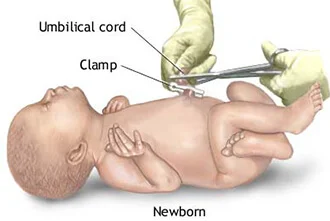
Clamping a baby’s umbilical cord with a peg shortly after birth is a standard practice in modern childbirth, and it serves several important purposes to protect the health of both the newborn and the mother...CONTINUE READING THE FULL ARTICLES HERE
First, clamping helps to stop the flow of blood between the baby and the placenta once the baby has started breathing on their own. This ensures that the baby gets just the right amount of blood without the risk of too much flowing, which could lead to complications.
Second, the clamp prevents excessive blood loss from the baby’s body. Without clamping, there would be an open blood vessel where the cord was cut, and this could lead to dangerous bleeding.
Third, clamping minimizes the risk of infections. The umbilical stump is essentially a wound after birth, and sealing it off helps keep harmful germs from entering the baby’s bloodstream.
Fourth, it provides a safe and clean point for cutting the cord. The peg secures the cord, so the cut can be made without causing pain or harm.
Finally, clamping makes it easier for the umbilical stump to dry out and fall off naturally within a week or two, supporting a smooth healing process.
Kindly Follow Our WhatsApp Channel
Disclaimer: This content including advice provides generic information only. It is in no way a substitute for a qualified medical opinion. Always consult a specialist or your own doctor for more information. NEWSHOUR does not claim responsibility for this information.
